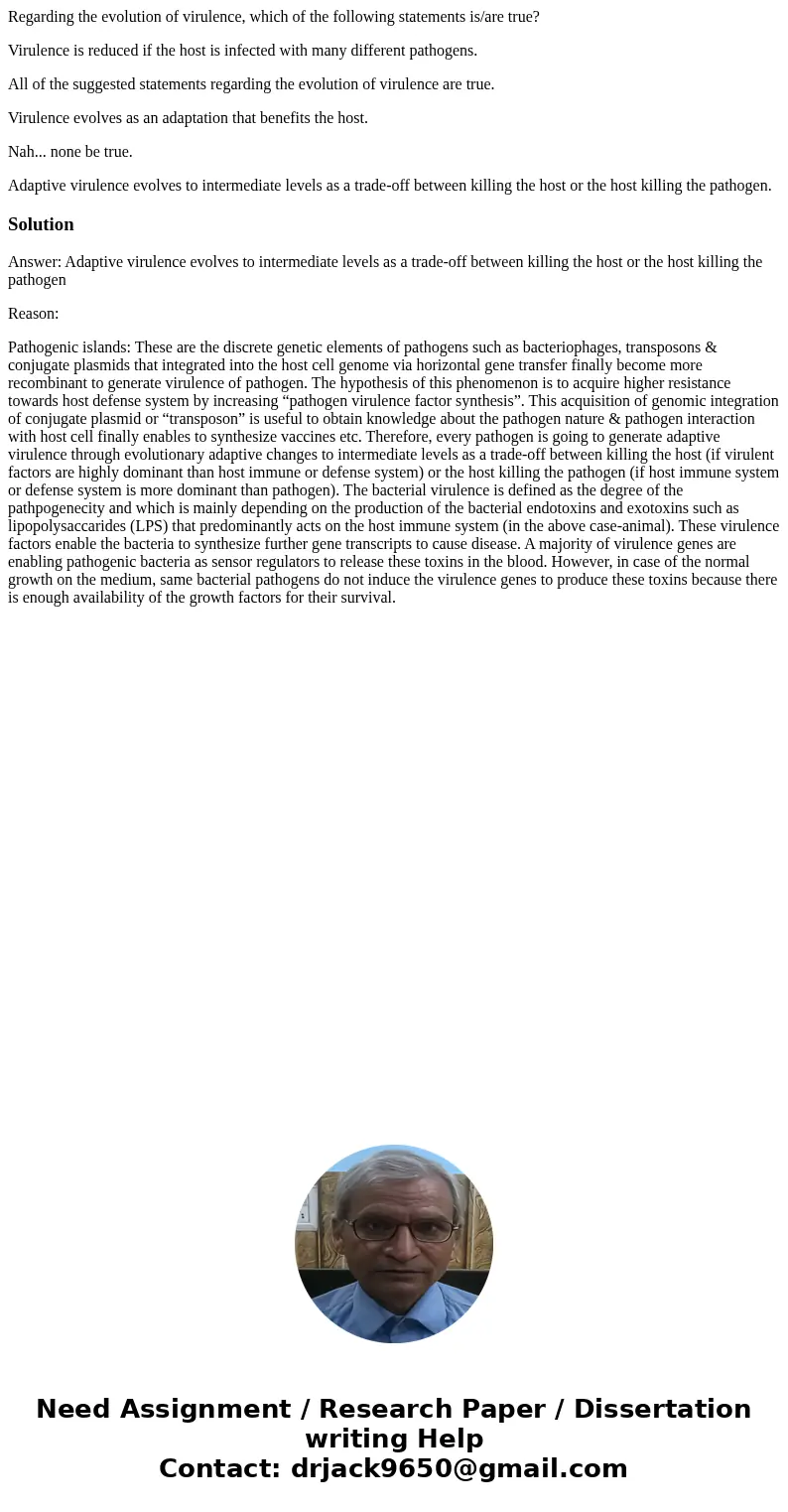Regarding the evolution of virulence which of the following
Regarding the evolution of virulence, which of the following statements is/are true?
Virulence is reduced if the host is infected with many different pathogens.
All of the suggested statements regarding the evolution of virulence are true.
Virulence evolves as an adaptation that benefits the host.
Nah... none be true.
Adaptive virulence evolves to intermediate levels as a trade-off between killing the host or the host killing the pathogen.
Solution
Answer: Adaptive virulence evolves to intermediate levels as a trade-off between killing the host or the host killing the pathogen
Reason:
Pathogenic islands: These are the discrete genetic elements of pathogens such as bacteriophages, transposons & conjugate plasmids that integrated into the host cell genome via horizontal gene transfer finally become more recombinant to generate virulence of pathogen. The hypothesis of this phenomenon is to acquire higher resistance towards host defense system by increasing “pathogen virulence factor synthesis”. This acquisition of genomic integration of conjugate plasmid or “transposon” is useful to obtain knowledge about the pathogen nature & pathogen interaction with host cell finally enables to synthesize vaccines etc. Therefore, every pathogen is going to generate adaptive virulence through evolutionary adaptive changes to intermediate levels as a trade-off between killing the host (if virulent factors are highly dominant than host immune or defense system) or the host killing the pathogen (if host immune system or defense system is more dominant than pathogen). The bacterial virulence is defined as the degree of the pathpogenecity and which is mainly depending on the production of the bacterial endotoxins and exotoxins such as lipopolysaccarides (LPS) that predominantly acts on the host immune system (in the above case-animal). These virulence factors enable the bacteria to synthesize further gene transcripts to cause disease. A majority of virulence genes are enabling pathogenic bacteria as sensor regulators to release these toxins in the blood. However, in case of the normal growth on the medium, same bacterial pathogens do not induce the virulence genes to produce these toxins because there is enough availability of the growth factors for their survival.

 Homework Sourse
Homework Sourse